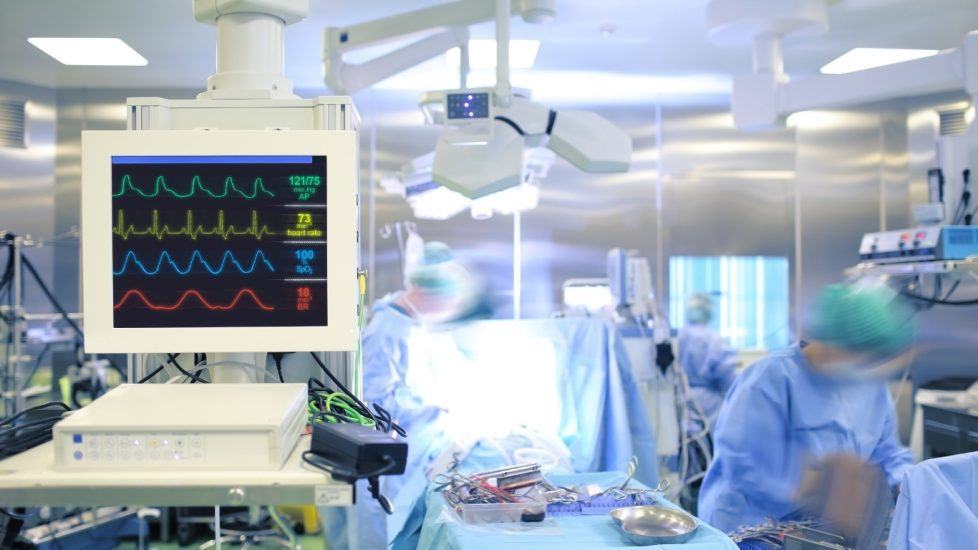Your cart is currently empty!
New Medical Device Coordination Group (MDCG) guidance document, MDCG 2022-4: “Guidance on appropriate surveillance regarding the transitional provisions under Article 120 of the MDR with regard to devices covered by certificates according to the MDD or the AIMDD,” was published on the 16 February 2022. It provides information for both manufacturers and Notified Bodies (NBs) concerning the transition requirements for legacy medical devices and may be found by clicking here.
The new MDCG guidance compliments previous transition guidance detailed in:
- MDCG 2019-10 rev. 1 “Application of transitional provisions concerning validity of certificates issued in accordance to Directives 90/385/EEC and 93/42/EEC”
- MDCG 2020-3 “Guidance on significant changes regarding the transitional provision under Article 120 of the MDR with regard to devices covered by certificates according to MDD or AIMDD”
- MDCG 2021-25 “Regulation (EU) 2017/745 – application of MDR requirements to ‘legacy devices’ and to devices placed on the market prior to 26 May 2021 in accordance with Directives 90/385/EEC or 93/42/EEC”
MDCG 2022-4 offers previously lacking practical guidance for both manufacturers and NBs regarding the requirements for surveillance audits under Article 120.
The document reiterates some key points from MDCG 2021-25, such as that legacy devices are required to meet the requirements laid down in Article 85 (Post-Market Surveillance [PMS] report for class I) and Article 86 (Periodic Safety Update Report [PSUR] for class IIa, IIb, III) of the MDR—based on their classification in accordance with the Medical Device Directive (MDD).
During the transition period, through 26 May 2024, a possible change of device risk class under the MDR should not be taken into account. PSUR dates are defined from the date of implementation of the MDR (May 2021), therefore, PSURs requiring annual updates for legacy devices will need to conform by May 2022.
All legacy active implantable devices subject to the Active Implantable Medical Devices Directive (AIMDD) are considered class III devices under the transition requirements. But, it is important to note that some MDR articles are NOT applicable to legacy devices:
- Article 15 : Person Responsible for Regulatory Compliance (PRRC) requirements
- Article 16(3) and (4): distributor and importers specific requirements
- Article 18 : Implant card requirements
- Article 25: Identification within the supply chain
- Article 27 : Unique Device Identification (UDI) system
- Article 32 : Summary of Safety and Clinical Performance (SSCP)
An Excel comparison table, “QMS MDD/MDR,” has been made available in an annex of the MDCG guidance. The correlation matrix can be used to show which MDD or AIMDD requirements are covered by the MDR.
For manufacturers utilizing Article 120 requirements, NB audits are required to verify the following:
- The transition plan for MDR compliance where the scope of devices covered by the MDD/AIMDD certificates covers devices which will be transitioned to MDR and/or discontinued
- The QMS has been adjusted according to the requirements of Article 120(3) MDR, concerning significant changes
- That changed procedures for PMS, including risk management and clinical data, are fed into the PMS plan, and that the PSUR update cycle is appropriate and follows the device’s current risk class
It is, therefore, crucial that manufacturers update their MDD compliant QMS Risk Management Plan and PMS Plan accordingly.
The MDCG document clarifies that Notified Bodies will continue to conduct the following requirements for legacy devices:
- Technical Files sampling at surveillance audits (class IIa and class IIb). In some circumstances, the sampling plan can be modified. Devices in the MDD sampling plan, which are already subject to an application under the MDR, can be omitted from the MDD sampling plan if the four (4) requirements defined in the MDCG document are met.
- Unannounced audits MDD sampling plan will be maintained (all classes).
For the on-site NB surveillance audits, four (4) scenarios are described in MDCG 2022-4, which can be separated into two categories:
1. MDD legacy devices only in the portfolio of the manufacturer with MDD compliant QMS only (no MDR QMS upgrade or application):
Audits are performed to show MDD QMS compliance with the additional MDR QMS requirements concerning PMS, market surveillance, vigilance and registration of Economic Operators.
2. If an MDR compliant QMS has been implemented by a manufacturer with MDD legacy devices with MDR certified devices in their portfolio or devices under MDR application:
Audits by the NB on legacy devices can be performed against MDR QMS requirements, excluding the articles mentioned above by following the Excel QMS comparison table MDD-MDR in annex of the MDCG (as long as the NB is MDR designated).
Where a manufacturer has both legacy devices and devices under MDR certification, the NB (under justifiable, MDCG defined circumstances) can concurrently conduct the MDR audit and the legacy device surveillance MDR audit under Article 120.
Final Remarks
In all, the new MDCG 2022-4 guidance allows manufacturers to plan their transition from MDD to MDR compliance with greater certainty with regards to transition requirements in Article 120. It also confirms that moving to a MDR designated Notified Body should be implemented as quickly as possible. The audits on legacy devices (in all classes), however, will include partial compliance to MDR requirements, Article 120(3).
How Can NAMSA Help?
NAMSA is the industry leader in driving successful regulatory outcomes through effective interactions with the EU Commission and Notified Bodies. Our internal teams of medical device and IVD development experts communicate with EU entities nearly every day and are the most experienced in industry at accelerating regulatory submissions and approvals for manufacturers. In fact, many of our Associates have previously held positions within these organizations, which provides Clients the benefit of a clearer understanding on how to proactively plan for international requirements and expectations.
To learn about NAMSA’s full suite of Regulatory and Quality services and solutions, including MDR compliance planning, please visit: https://namsa.com/services/consulting/us-fda/
Or, if you are interested in meeting with one of our regulatory experts, please visit: https://namsa.com/namsa-expertise/subject-matter-experts/.

